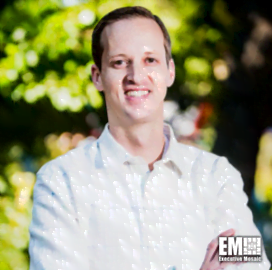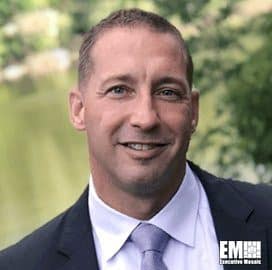
Scott Rosebush
Senior Program Director
Cubic
Member Profile: Scott Rosebush, Senior Program Director for Cubic Mission and Performance Solutions
Cubic Mission and Performance Solutions’ Senior Program Director Scott Rosebush recently participated in an exclusive Executive Spotlight interview with the Potomac Officers Club to talk about his impetus in the government contracting sector, significant career accomplishments and his solutions for optimizing defense innovations in support of our nation’s warfighters. In this interview, Rosebush also shares his driving motivation for his continued work ensuring the country’s safety and security.
When did you decide to pursue a career in the federal landscape and what were the key tasks that you wanted to complete? Any bigger goals you still want to accomplish?
“I have to admit I stumbled into a career in the federal landscape, but I’m glad I did. I studied systems engineering and computer science in undergraduate and graduate school, respectively, and I was interested in the dynamic and emerging field of cyber security. I took a job with a DoD contractor helping to protect and add security to multi-domain networks for the U.S. Air Force. I connected with the idea of my contributions supporting the mission of national security. I come from a military family and was raised with respect and admiration for those who sacrifice their lives for our country. I wanted to be a part of keeping our adversaries from accessing, blocking, or exploiting our warfighters’ precious information.
I’ve held true to that goal over the course of my more than 20 years in the industry and have been fortunate enough to work on a variety of programs, technologies and teams that are targeted at keeping people safe. My future goals include staying true to the theme of security and safety. As I’m entrusted with increasing levels of authority and accountability, I am humbled and energized by having a greater and greater opportunity to produce results that really matter.”
If your career came to an end tomorrow, what would you say have been the most significant accomplishments of your career? Where do you feel you made the most impact?
“I’ve had the pleasure of working on some great projects with some great teams. I’ve also had what I’d characterize as a couple of signature accomplishments. For example, while working for Northrop Grumman, my team built a payload prototype that helped 5th generation aircraft share data with 4th generation platforms. We had the opportunity to demonstrate and test the prototype at a variety of large force exercises, including Valiant Shield, Northern Edge and Trident Warrior in realistic test environments with live and virtual assets. Favorable test results proved that the payload could significantly help a potential future conflict, which led to sweeping changes in future requirements and acquisition plans.
Another proud moment was when a team that I led designed, developed, integrated and tested a prototype solution for an airborne communications gateway for the Australian Defence Force. The solution solved a decades-long interoperability challenge across otherwise stove-piped aircraft and helicopters.
As a final example of a memorable accomplishment, I’ve had the pleasure of leading a team working on High Capacity Backbone (HCB) solutions developed by Cubic on behalf of the U.S. Air Force. Using novel rapid prototyping digital engineering techniques, my team was able to successfully accomplish Preliminary and Critical Design Review phases for HCB three and six months after award, respectively. Our solution features a game-changing, software-defined antenna technology called HaloTM that I’m proud to be working hard to bring to the warfighter to enable a high-bandwidth ad hoc mesh network for reliable and resilient exchange of full motion video and other information types.”
With emerging technology influencing the federal government and industry more by the day, what are some of the challenges on the business side of innovation that aren’t always discussed as often as they should be?
“From my perspective, one of the biggest challenges of embracing emerging technology in the federal government space is adjusting from traditional acquisition practices to something more agile and rapid. When you look at recent technological advances like shrinking satellite build-and-deploy lifecycles from decades to months and eliminating the lengthy accreditation approvals for technical refreshes for software using techniques like Continuous Approval to Operate (cATO), our acquisition processes simply weren’t designed to accommodate those changes. Exacerbating the problem is the fact that our adversaries have become increasingly nimble. So in some cases, we don’t just need to speed up acquisition by 10 or 20 percent, we need to multiply our acquisition velocity by 10 or 20 times.
There are certainly acquisition reform efforts targeted at solving this problem, including Section 804 Rapid Prototyping, Other Transactional Agreements (non-FAR), and Digital Engineering multi-phased risk reduction oriented approaches (including Model Based Systems Engineering), and I’m hopeful those changes will result in faster fielding of technology. But I think additional emphasis on creativity, flexibility and agility in the contracting domain will be critical to the defense of our nation going forward.”

Category: Executive Profiles




